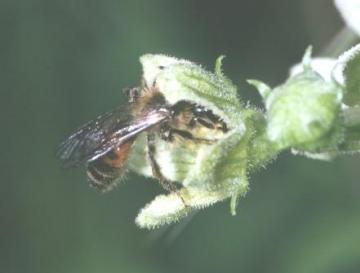Species Account for Andrena florea
Andrena florea Fabricius, 1793
a mining bee
Aculeata: Andreninae

Reproduction for study and non-profit use permitted, all other rights reserved.
Taxonomic group: bees and wasps (Aculeata) - County data
View time series maps for Andrena florea
member log-on for taxon report
Status: RDB 3
Essex RDB: Listed
Threat: Essex Threatened
Images
upload a new image
Essex Red Data List comment
forages on Bryonia dioica
Species text
Andrena florea is a rare mining bee with, until recently, confirmed records only from Wilts, N. and S. Hants., W. Sussex, Surrey, Middlesex and Essex. In 2015, it was recorded for the first time in Suffolk, with a first record for north-east Essex in 2017. Since 2014, it has been spreading eastwards across Kent. In Falk (1991) there were post-1970 records known for only nine scattered sites in south-east England, but records since 1993 indicate a nationally important population occurs in south Essex along the East Thames Corridor (see map). The species is found in open scrubby areas on heaths, grassland, old sand pits and woodland edge. Nest burrows are dug in exposed sandy soil including paths. This bee is single brooded, with adults found from late May to August. The females gather pollen exclusively from white bryony, Bryonia dioca. References
Habitats
Recorded management for locations with Andrena florea
Recorded substrate and hydrology for locations with Andrena florea
Why not join the Club, register and add a new species page
Interpretation of distribution maps





















